The Google Pixel 4 XL Review: Stuck In The Past In 2019
by Andrei Frumusanu on November 8, 2019 11:30 AM EST- Posted in
- Mobile
- Smartphones
- Pixel 4
- Pixel 4 XL
Display Measurement
The display of the Pixel 4 is one of the phone’s main features thanks to the 90Hz refresh rate. As mentioned in the introduction, the displays on the Pixel 4 series this year is again dual-sourced between LG and Samsung. The regular Pixel 4 receives an LG panel, while the 4 XL that we’re testing and reviewing today, uses a Samsung display.
Android Q promised to have implemented a new iteration of Google’s colour management system, and for the first time, the Photos app is actually able to properly display wide gamut pictures. Unfortunately, it’s still a very limited system in apps as they cannot display differing gamut pictures side-by-side, so for example the thumbnail view is shown only in sRGB. Most importantly, Chrome by default still doesn’t support wide-gamut content as you have to force it in the engine settings, and this implementation doesn’t use the OS’s CMS handling.
We move on to the display calibration and fundamental display measurements of the Pixel 4 XL screen. As always, we thank X-Rite and SpecraCal, as our measurements are performed with an X-Rite i1Pro 2 spectrophotometer, with the exception of black levels which are measured with an i1Display Pro colorimeter. Data is collected and examined using SpectraCal's CalMAN software.

Starting off with the brightness, the Pixel 4 XL is relatively conservative as it peaks out at 438 nits in all scenarios. It’s again very odd here as Google can’t seem to make up its mind on whether it wants to offer an auto-brightness boost or not. Last year, the Pixel 3 only had it available in its Adaptive mode, whilst this year the Pixel 4 doesn’t offer it all, even though the display drivers actually has the high-brightness mode implemented.
In terms of greyscale calibration and accuracy, on my unit things differed greatly based on brightness. At maximum brightness, the Pixel 4 XL was seemingly quite accurate with good colour balance and gamma reproduction. At our standard 200cd/m² measurement point however, things are quite worse. First off, all there’s a more notable colour shift towards greens on the unit which isn’t great. Following that, there’s also creeping issues with the gamma calibration as it’s non-linear and deviates a lot more from the 2.2 target. What this results in is some shades, especially at the higher levels, appear darker than they should be.
I’ve also noted and captured some sort of bug in the display behaviour; when I was measuring at minimum brightness, I encountered some really bad results. I’ve seen this mentioned by some other reviewers and the issue went away when I toggled the screen refresh rate. The odd thing though, is that I wasn’t able to immediately reproduce it afterwards and results on the new measurements were quite ok. The colour shift the phone took was extremely noticeable at the time the bug took place.

SpectraCal CalMAN
"Natural" Greyscale colours

In terms of dE2000, the biggest culprit to the average 2.29 result for me is the green tint of whites as well as the slightly off gamma.
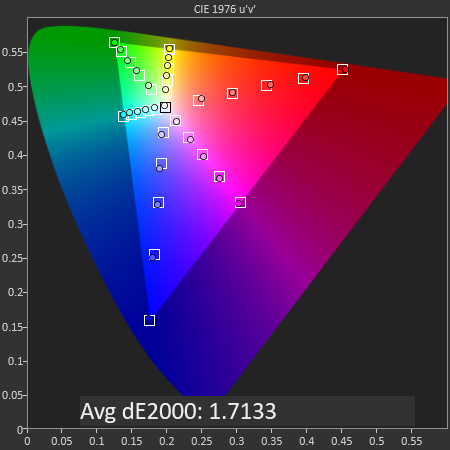
SpectraCal CalMAN
sRGB Gamut
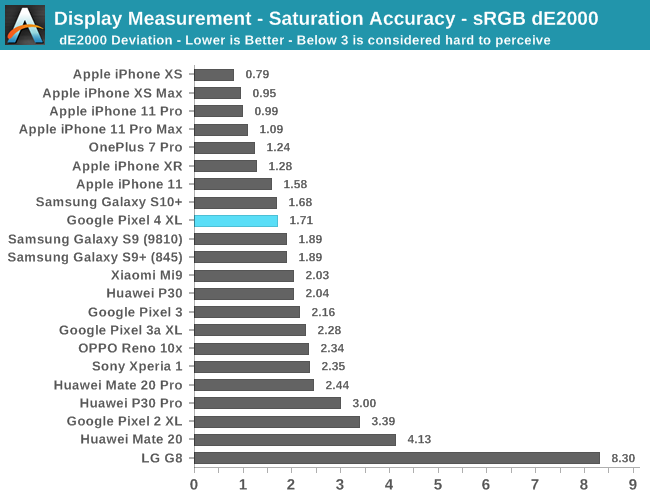
In the sRGB gamut, the Pixel 4 XL does well with a dE2000 of 1.71. The biggest issue again is a shift in the tones towards green, but also seemingly very slight oversaturation of all the tones.
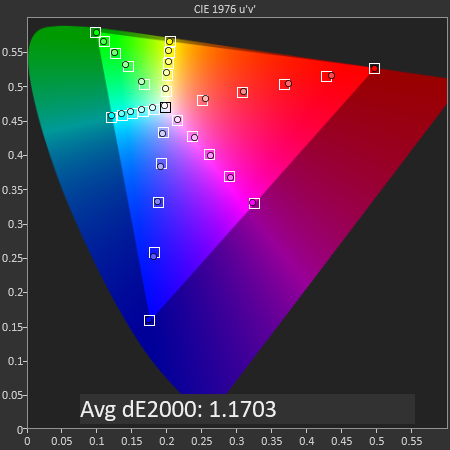
SpectraCal CalMAN
Display P3 Gamut
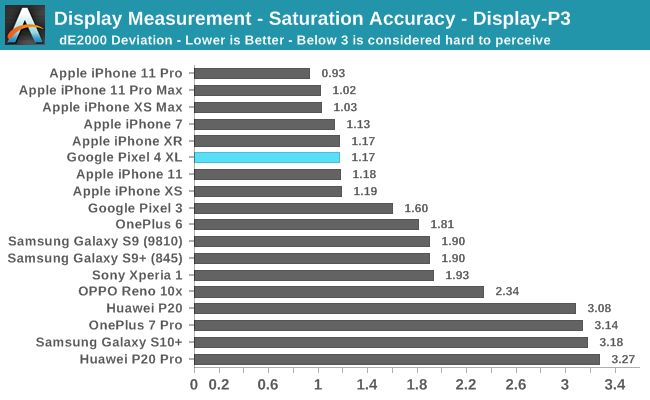
The Display P3 gamut performs a lot better. Here while the green tint is still present, the saturation levels are better and thus the Pixel 4 XL ends up with an excellent dE2000 of 1.17.

SpectraCal CalMAN
Gretag-Macbeth

Finally, in the GMB test, the Pixel 4 XL ends up quite average with a score of 2.34 as it’s showcasing tones that are too dark, a green tint in the whites, with some hue errors for a few tones.
Display Conclusion – Good, but not A+
Overall, the Pixel 4 XL’s display characteristics beyond it’s 90Hz refresh rate are quite average. Whilst Google has been able to improve the calibration compared to what we measured on the regular Pixel 3 last year and the 2 XL the year before that, it’s still quite a bit behind what some other vendors are able to achieve. The display’s lower brightness is also a bit of an issue in direct sunlight as it lacks any kind of boost behaviour. Finally, the remaining characteristics such as viewing angles and sharpness are excellent, but that’s just generally a common characteristic of panels with these specifications.
The results today aren’t really a surprise to me given Google’s track record with the displays on the Pixel series, however it does stand in contrast to what the company was proclaiming at launch: “A+ rating Best Smartphone Display Awards” really doesn’t mean anything at all if, first of all, it’s a sponsored award, and secondly, if the measurements aren’t representative of a random production unit. Make of it what you will.


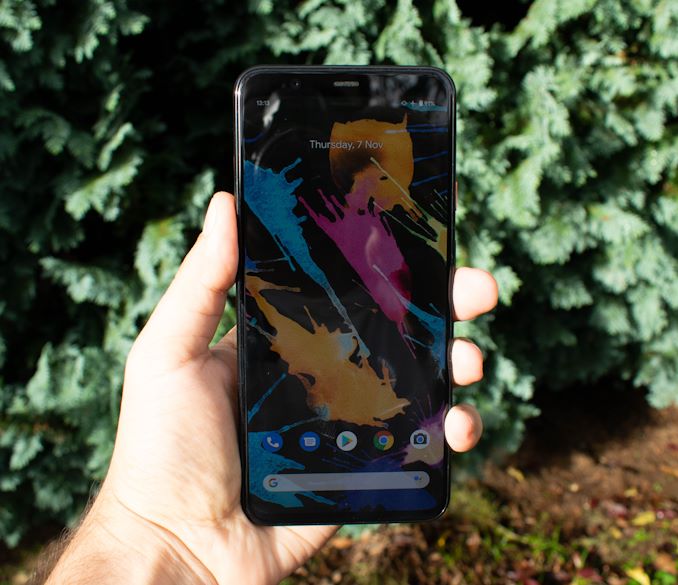
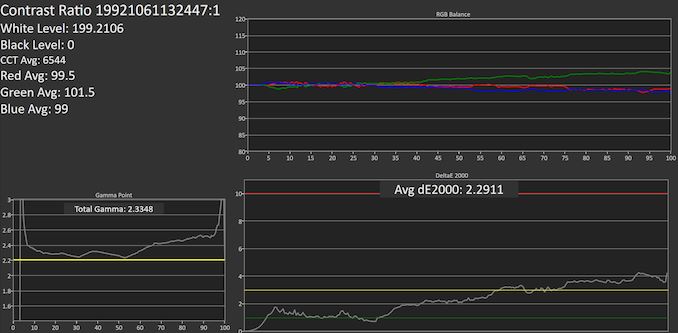
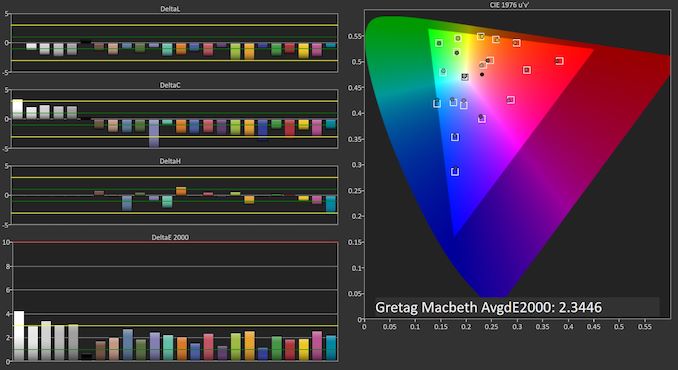








159 Comments
View All Comments
brucethemoose - Friday, November 8, 2019 - link
The cost difference between 64GB and 128GB of smartphone flash has to be trivial these days. Its hard to believe anyone is still doing it, much less that Google and Apple are doing it in $800 flagships.crimson117 - Friday, November 8, 2019 - link
It's because the 64GB is priced lower to get you in the door, so they can upsell the 128GB to you for ~$50 more of mostly profit.Jcaro14 - Friday, November 8, 2019 - link
Yeah this phone is not for you, if you are looking for the latest hardware design you should stick with Samsung, Huawei, or Xiaomi. The Pixel is design for the best Android Software experience. I'm if you had one you would understand but since you just go by what the tech snobs say, sadly you won't be able to experience this awesome software experience that the Pixel provides.Andrei Frumusanu - Friday, November 8, 2019 - link
The Pixels are not the best "Android" experience, they're outright a Google experience.Most of the Pixel only features are geographically or language limited. If you're not using any of those features then the Pixel lineup is no any better at Android than say a Samsung device.
Pooppoot - Saturday, November 9, 2019 - link
I disagree as someone who has used both and most Android devices! To me the Pixel line offers the "best" Android experience! It's a subjective matter though.Quantumz0d - Monday, November 11, 2019 - link
Wrong. I've also used Pixel 3a and it's nothing vs a custom skin or even a barebone Lineage OS.AOSP is being degraded with every Pixel revision. Pixel uses proprietary System UI and they offloaded a lot of Android's AOSP apps to their own - Messaging, Phone, Browser all are EOLed in AOSP. Pixel System UI has the worst customization features ever. And even their latest Recorder app is using Scoped Storage, thus once you record you do not see it in your Filemanager/filesystem which is BULLSHIT and can be shared from app (WTF?) plus no icon pack support too or the garbage launcher. Nova decimates that to oblivion.
Best is subjective, I like LG because of no bloat (Smartworld and one more app that's all) vs others like Samsung because it has all the things you need from time location, notification dots numbering on status bar customization to even notification transparency on lockscreen, Plus AOD watch faces and all. OnePlus offers faster Android UX. Mind you all these are proprietary and beat Pixel user experience a.k.a Google Experience ( dumbed down experience )
So yeah there's no Best, old times Nexus used to have the best Android experience with it's pure Stock AOSP skin. Then there was Cyanogen Mod with insane customizations and free themes, halcyon days of Android. Lineage OS and it's derivatives like Resurrection Remix have tons of features in built and there are lot of ROMs which massively improve on UX and speed / customization like Potato ROM.
s.yu - Wednesday, November 13, 2019 - link
I had to work with an S4 Lite 4 years ago for a few months because my phone at the time got stolen, and it lagged to the point of being unusable so I said what the hell and flashed Cyanogen, however it continued to lag without notable improvement.generalako - Friday, November 8, 2019 - link
.generalako - Friday, November 8, 2019 - link
I'm not a tech snob, but a long-time Pixel user. Hardware DOES MATTER when I pay $800.Quality control DOES MATTER.I RMAed two different Pixel 2's and thre different 2 XL's. I RMAed three different Pixel 3's and two different 3 XL's. That's unacceptable for a flagship phones. The number of widespread QC issues in this series of phone is unprecedented -- as someone who buys and tests flagships, and also sell them, I have never seen anything like it.
Battery DOES MATTER. Medicore battery size for the size and thickness, and battery life for battery size being mediocre as well, leading to bad battery life, generation after generation, is unacceptable.
Display DOES MATTER. Going with a mix of Samsung OLED and shitty and cheap LG OLED, treating their calibrations differently, is unacceptable. As is bad calibraiton (especially gamma -- how can you provide black crush like this, year after year!?). As using LG OLED full of grain and color uniformity issues. It's like they're ordering the cheapest units they can get their hands on, from both LG and Samsung.
RAM DOES MATTER. When they can't prove themselves by good RAM management, but instead bad, then 4GB is not enough and impedes on actual user experience. 6GB as well over time.
Storage DOES MATTER. Spotify downloads alone take up 32GB. And when they decide to completely abandon the customers with free original backup on photos, this becomes even more important.
And on and on it goes. I used Pixels for years because, as you point out, software smoothness and consistency is important for user experience. But none of it excuses all the other range of issues they have, nor does it justify the price tag they have. Pixel 3a gives me Pixel UI smoothness as well, for example, and it costs $400
I actually jumped to the 3a from the 3, due to all the issues I had, and consider it an overall superior unit. Even Pixel 2 was a superior unit, as the Pixel 3 regressed in display quality, battery life and even smoothness (for some reason).
Don't forget that Google was doing the superior software schtick with Nexuses as well: Nexus 5 is one of the best phones every made, Nexus 7 v2 the best tablet ever made, precisely for this reason. But they were cheap units. Likewise, Pixel 3a is Google's best Pixel ever, and Chromecast, Home Mini, etc. are their best products. Problem is that Google wants to make "flagship" units where it provides mostly same low-quality, but for 2-3x the price. That's unacceptable. You know that.
Pixel 4 isn't a $800 device just as the Pixel Slate wasn't a $1000 device.
I can't believe I waited so long for this device and was naive enough to think that maybe Google would learn. But they never do.
s.yu - Saturday, November 9, 2019 - link
In their argument, the BOE panels are probably cheaper?